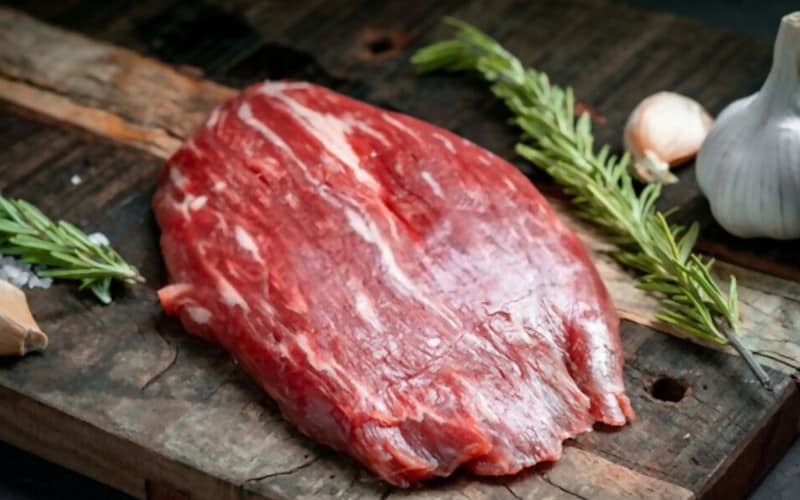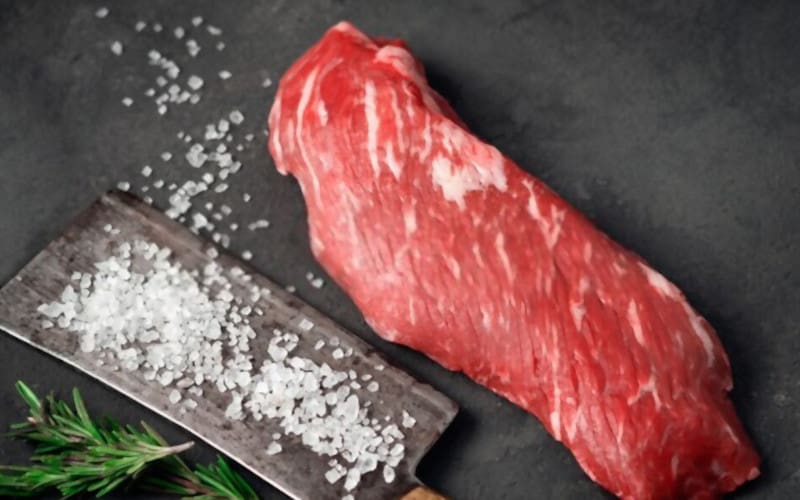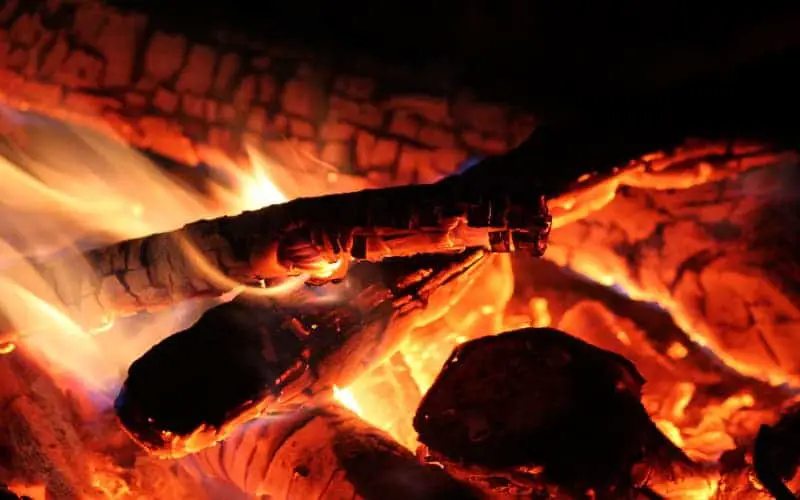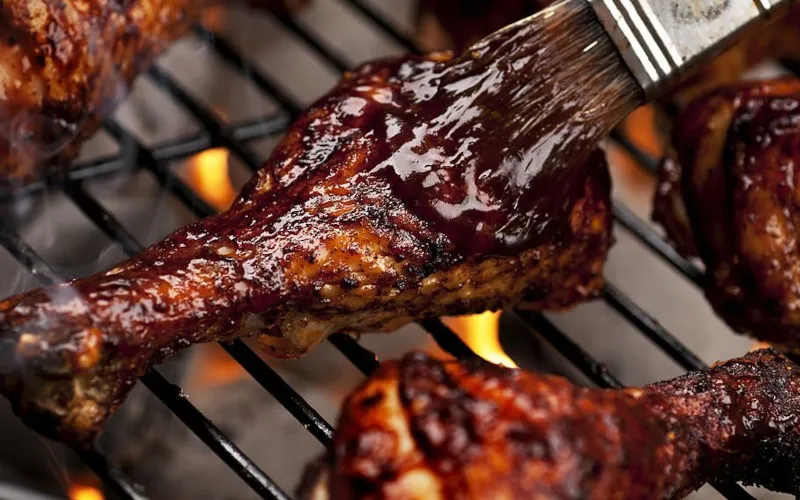A lot of people think that all there is to cooking steak is seasoning it and throwing it on the grill. This is not true! There are many different types of steak with their own unique flavor profile, texture, and preparation methods.
One very important distinction between two popular cuts of steak is flank steak and skirt steak. Both have a similar thickness, but this article will break down what makes them different so you can choose which one to buy for your next meal.
What is Flank Steak?

Flank steak is a cut of beef that comes from the lower abdominal area of the cow which contains more fat and is a leaner cut of meat. When cooked, it becomes very tender and has a strong flavor with an intense aroma.
When cooking flank steak, it can be sliced thin and rolled for the popular London Broil dish or marinated and grilled whole to maximize its flavor profile including strong aromatics from herbs or spices.
It is best when marinated or quickly seared at high heat on each side for about 30 seconds to one minute per side. It is a very common cut in many cuisines and can be found at most grocery stores.
One of the benefits of flank steak is that it won’t shrink too much during cooking, which means you’re less likely to end up with a small piece of steak. Flank steak is typically cut at an angle, which also makes it great for marinating. However, flank steak can be tougher if overcooked or undercooked.
Pros:
- It has a good amount of fat, which means it’s flavorful and moist. This also means that you can skip adding oil to the pan when cooking.
- The meat is usually cheaper than other types of steak.
- Flank steak is usually still red in the center, even when fully cooked.
- Preparing this type of steak takes less time than other varieties.
- This cut tastes great with sauces like chimichurri or pesto.
- If you’re watching carbs, this cut is perfect for you. It only has 0g carbs per 3oz serving.
Cons:
- Flank steak is tough to cook.
- It can be difficult to get a thin and tender texture even if you use a marinade and cook the flank steak at low heat for a long time.
- This cut also needs to be thinly sliced against the grain, which can take time and patience so the meat doesn’t turn tough during cooking.
What is Skirt Steak?

Skirt steak is the first thing that comes to mind for many people when they think about a flavorful and tender cut of beef.
Skirt steak comes from the diaphragm of the cow and has long been popular in Latin American countries such as Venezuela, Colombia, Argentina, Mexico, etc. Skirt steak comes from an area that contains more fat than other cuts.
It is best cooked to medium-rare and sliced thinly across the grain. It can be used in a variety of dishes from fajitas to stir fry, but it’s most commonly seen on top of salads or inside burritos.
It is best if marinated to help break down some of the fat and then quickly seared on high heat for about 30 seconds per side.
It is very important that this cut be cooked properly. Too long or too low of a temperature will make it tough, chewy, and flavorless.
Pros:
- It’s a very thin cut, so it cooks up quickly and easily on the grill or stovetop. This makes it great for those who are always in a rush.
- The meat is more tender than flank steak, which means you can chew through larger pieces without getting tired out.
- The meat is slightly leaner than flank steak, which means you can skip adding oil to the pan when cooking.
- A very versatile cut of beef, skirt steak can be grilled, sautéed, seared, and braised. It is also a great choice for fajitas or tacos.
- The large surface area allows the steak to sear well and develop a nice crust on the outside that is different from other cuts like ribeye or strip steak.
- A strong flavor and rich texture make it perfect for flavorful marinades and sauces like chimichurri or red wine sauce. You can also season with salt and pepper before cooking.
- It’s also a good choice for those watching their carbs as it only has 0g of carbohydrates per serving size.
Cons:
- The skirt steak’s long striations mean that not all sections are tender enough to eat without being chewy or tough. The region of the meat closer to the outside is often too chewy, but some people enjoy this texture.
- It also tends to be on the fatty side so you might want to ask for a leaner cut of skirt steak or trim off any excess fat after cooking it.
The Difference Between Flank Steak and Skirt Steak
Flank steak and skirt steak are very similar cuts of beef, but there are some important differences that can make all the difference in terms of the flavor profile.
Skirt steak is often confused with flank steak because both cuts come from very similar areas on the cow, but skirt steak has more marbling which means it will be much juicier than flank steak.
Flank is best-cooked whole like London Broil or sliced thin for fajitas while skirt should be marinated quickly before searing on high heat to maximize its potential as a flavorful cut of meat.
Flank steak requires marinating to tenderize the meat, while skirt steak does not need this process.
Skirt steaks are usually grilled or pan-fried in a short amount of time because they can dry out quickly. Skirt steaks should be cooked medium-rare, while flank steak should be cooked well done. Skirt steak can dry out quickly so it should be eaten immediately after cooking.
On the other hand, flank steaks are marinated for around six hours overnight so they can become more tender and flavorful. This makes them perfect for cooking in slow cookers or baking in ovens at low temperatures.
Flank steaks are best when slowly braised in a slow cooker or oven, but they also do very well on the grill.
Conclusion
For those of you who are still unsure which type of steak to buy, we hope our article has helped. We’ve given you all the information you need about these two cuts so now it’s up to your decision.
The next time you head out for dinner and see flank or skirt steak on the menu, go ahead and order whichever one appeals more to your taste buds.
Remember that both types have their own unique flavor profile, texture, and preparation methods worth trying – but whether they’re good is largely dependent on how well they’re cooked.





